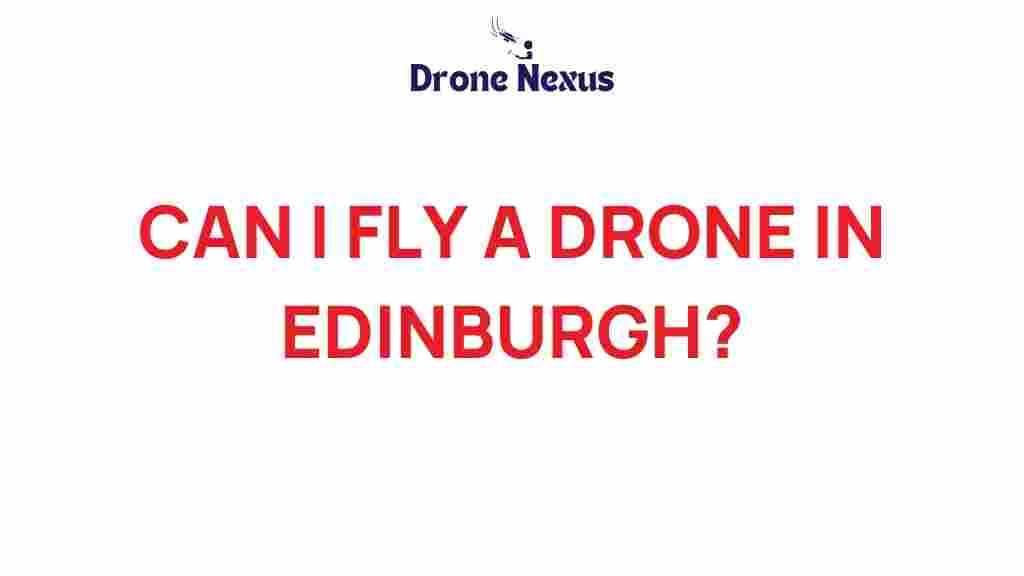Exploring the Skies: Drone Regulations in Edinburgh
Edinburgh, the stunning capital of Scotland, is a city rich in history, culture, and breathtaking landscapes. With its medieval architecture and beautiful parks, it’s no wonder that drone enthusiasts are eager to take their devices to the skies and capture the beauty from above. However, before you launch your drone in this picturesque city, it’s crucial to understand the drone regulations that govern their use. This article will guide you through the necessary steps to fly a drone in Edinburgh legally and safely.
Understanding the Basics of Drone Regulations
Before getting into specifics, let’s explore some essential regulations that every drone pilot should know. The drone regulations in the UK are designed to ensure safety for both the drone operator and the public. Here are the key points:
- Drone Registration: All drones weighing 250 grams or more must be registered with the Civil Aviation Authority (CAA).
- Drone Pilot Certification: Pilots must obtain a Flyer ID by passing a basic online safety test.
- Height Restrictions: Drones cannot be flown above 120 meters (394 feet).
- Proximity to People: Drones should not be flown closer than 50 meters to uninvolved people.
- Air Traffic Control: Always avoid flying near airports or airfields without prior clearance.
Understanding these regulations is the first step to enjoying your drone flying experience in Edinburgh safely. Now, let’s dive deeper into the specific regulations that apply to this vibrant city.
Step-by-Step Process to Fly Your Drone in Edinburgh
1. Register Your Drone
Before you can take to the skies, ensure that your drone is registered with the CAA. This registration process is straightforward:
- Visit the CAA registration website.
- Complete the registration form and pay the fee.
- Receive your registration details and attach your Flyer ID to your drone.
2. Obtain a Flyer ID
To demonstrate your understanding of drone safety, you must pass an online test provided by the CAA. This test covers essential drone safety information. Once passed, you will receive a Flyer ID that must be displayed on your drone.
3. Know the No-Fly Zones
Edinburgh has specific areas where flying drones is prohibited or restricted. Familiarize yourself with these locations:
- Edinburgh Castle: A historical landmark with strict regulations.
- Holyrood Palace: Close to the Scottish Parliament, this area has no-fly restrictions.
- City Parks: Always check local regulations as some parks may have drone flying bans.
It’s essential to respect these no-fly zones to avoid penalties. You can use apps like Drone Assist to identify restricted areas around you.
4. Plan Your Flight
Once you have registered and obtained your Flyer ID, you can plan your flight. Consider the following:
- Weather Conditions: Check the weather forecast to avoid flying in adverse conditions.
- Time of Day: Early mornings or late afternoons often provide the best lighting for aerial photography.
- Purpose of Flight: Whether you are flying for fun, photography, or a commercial project, ensure you have the necessary permissions.
5. Conduct a Pre-Flight Check
Before launching your drone, perform a thorough pre-flight check:
- Inspect the drone for any damage.
- Ensure that the batteries are fully charged.
- Test the controls to make sure everything is functioning correctly.
6. Fly Responsibly
Once you’re all set, it’s time to fly! Remember to:
- Maintain visual line of sight with your drone.
- Respect the privacy of others; avoid flying over private properties without permission.
- Be aware of your surroundings and avoid flying near crowds.
Troubleshooting Common Issues
Even the most experienced drone pilots can encounter problems while flying. Here are some common issues and how to troubleshoot them:
1. Loss of Signal
If your drone loses signal during flight, it may automatically initiate a return-to-home (RTH) feature. To prevent loss of signal:
- Ensure you are within the drone’s operational range.
- Check for any physical obstructions that may interfere with the signal.
2. Low Battery Warning
Always keep an eye on your drone’s battery level. If you receive a low battery warning:
- Immediately guide your drone back to you.
- Do not attempt to push the drone’s limits; prioritize safety.
3. Camera Malfunction
If the camera is not functioning correctly:
- Check the camera settings through the app.
- Restart the drone to reset the camera.
Conclusion
Flying a drone in Edinburgh can be an exhilarating experience, allowing you to capture breathtaking views of this historic city. However, adhering to the drone regulations is crucial for ensuring your safety and the safety of others. By following the steps outlined in this article, you can enjoy your drone flying experience while respecting the laws that govern drone use in the UK.
For more detailed information on drone regulations, visit the CAA website. Happy flying!
This article is in the category Safety and created by DroneNexus Team
